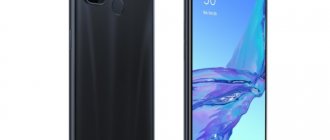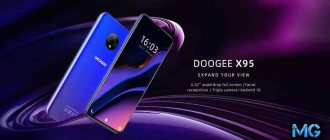Xiaomi is an example of dynamic short-term development, which some call a breakthrough. The Chinese brand began developing phones in 2011, and based on the results of 2021, it came out on top in Russia in the import and sale of smartphones. Reasons for popularity:
- extensive production facilities owned by the company make it possible to reduce the cost of production of spare parts and assembly of finished devices;
- the allocation of funds for a “think tank” of engineers and developers contributes to the release of high-tech new products at a high pace;
- loyalty to distributors and thoughtful marketing policies make Xiaomi smartphones friendly for both buyers and sellers;
- the low price of devices in comparison with competitors allows us to win the “battle” for the user over and over again.
The importance of the camera in Xiaomi smartphones
A gadget maker can improve various components of phones, focusing on long-lasting performance or a powerful processor. The products of the Chinese brand have enough of everything, with close attention paid to cameras.
Smartphone manufacturer Xiaomi pays close attention to improving cameras
The flagships of the Chinese manufacturer are distinguished by record-breaking cameras. But budget devices also show very decent results in terms of shooting quality. It’s no wonder that Xiaomi’s tactics are to release budget devices with impressive characteristics. At the same time, you need to be honest: a smartphone cheaper than 10 thousand rubles will have a good camera, but only in comparison with other budget devices. However, the low price compensates for this feature.
Table No. 1. Purpose of cameras in Xiaomi smartphones.
| Price segment | Camera resolution, MP | Purpose |
| Budget smartphones | From 8 to 13 MP | Amateur photography in the daytime in good lighting |
| Mid-priced devices | From 12 to 64 MP | Universal shooting with customizable parameters, including in the evening |
| Expensive smartphones and flagships | From 20 to 108 MP | Any shooting modes, the ability to create professional photos |
TOP 3 Xiaomi smartphones that support wireless charging
Top smartphones for those who like to use the device even while charging - wireless adapters of the models allow you to charge the phone without the need to constantly be at the outlet: Mi 11 Pro, Mi Mix 3, Mi 11 Ultra.
Mi 11 Pro
8.5/10
rating One of the best Xiaomi smartphones with wireless charging. The 6.8 diagonal Amoled screen has a resolution of 1440x3200 pixels. The phone supports HDR10+ and Dolby Vision. Powered by an eight-core Qualcomm Snapdragon 888 processor with a frequency of 2840 MHz. RAM – 8/12 GB. The multi-level cooling system prevents the gadget from overheating. The battery is fully charged in 36 minutes.
Pros:
- two slots for SIM;
- stylish design;
- fast and smooth;
- high quality display;
- stereo speakers.
Minuses:
- average level of autonomy;
- weak front camera;
- There is no charging cable included.
Mi Mix 3
9.0/10
rating The Mi Mix 3 smartphone will delight you with an organic display with a resolution of 2340×1080 pixels and a modern high-performance Snapdragon 845 chipset. The advantages of the model do not end there. Depending on the configuration, Mi Mix has from 6 to 10 gigabytes of RAM, storage can be purchased up to 256 GB. Instead of the usual glass, the back of the Mi Mix 3 is made of ceramic with rounded edges.
The display is protected by Corning Gorilla 2.5D glass. The frames are noticeable, but you get used to them as you work. There is a dual camera module on the back cover.
Pros:
- high performance;
- excellent design;
- good stereo sound;
- does not heat up;
- MiUI user interface.
Minuses:
- heavy;
- USB 2.0;
- no SD card slot.
Mi 11 Ultra
9.4/10
rating Mi 11 Ultra is a hit in the Asian market with the best hardware. This model is equipped with a touch camera, awarded the highest score. Inside, everything looks no less impressive. But first, let's talk about the design: Mi 11 Ultra is made of glass and ceramics. The ergonomic body fits perfectly in the hand, and the phone is not so heavy that it strains the muscles. A smooth metal frame runs between the ceramic back cover and the glass.
Protected by innovative Gorilla Glass Victus, the display has a diagonal of 6.8 inches. The thinnest frames are almost invisible, the screen-to-body ratio is 91.4%. The most distinctive design element of the MI 11 Ultra is the noticeable camera bump with the secondary display.
Pros:
- high-quality assembly;
- dust-, waterproof;
- autonomy;
- excellent picture quality;
- huge display;
- 8k video recording;
- case included.
Minuses:
- slow fingerprint scanner;
- warms up.
How to choose a smartphone with a good camera from Xiaomi
Making a choice in favor of Xiaomi phones means getting a device that is cheaper than that of competing companies, but not inferior to classmates in functionality and advanced hardware. True, the software of Chinese devices may sometimes not work correctly, which is caused by constant updating and modification of released firmware. By paying attention to a number of parameters, you can choose a model according to your taste, requirements and financial capabilities.
Screen diagonal
The trend towards increasing smartphone screen diagonal has gradually stabilized at the same level. What seemed like a portable TV ten years ago is now an average smartphone. However, there is a limit, after which it becomes inconvenient to use a smartphone - it turns into a small tablet, and this is a slightly different device. The diagonal of most modern devices lies within a fairly narrow range from 5 to 6.5 inches.
Most modern smartphones have a screen diagonal of 5 to 6.5 inches
Matrix technology
Today you can find two competing technologies in phones: IPS and AMOLED. They have fallen significantly in price in recent years and are actively installed even on budget-level devices. IPS is cheaper and more reliable, with better color rendition. On the AMOLED side there are deep blacks, an economical mode and fast response time.
Camera
The most important parameter in the current review. Simple devices are equipped with a single camera, but more expensive products have long mastered a system of several optical-electronic modules. The camera in a smartphone cannot be made completely universal - this would require introducing a variable focal length, and this would turn the camera phone into a camera with the ability to communicate through cell towers. Suffice it to recall the example of the Samsung Galaxy S4 Zoom, which remained at the stage of a small-scale model.
Thanks to powerful processors and large amounts of RAM, modern phones are equipped with multiple lenses to take different shots.
The solution was found in installing several lenses with different characteristics. One is suitable for panoramic shooting due to its wide angle, the other is for capturing portraits, and the third is for capturing in macro mode. Sometimes all three or four lenses work together in an HDR scheme, and the resulting images are superimposed on each other to form the final best image. All this became possible thanks to new powerful processors and a large amount of RAM.
CPU
In Xiaomi smartphones you can find two types of multi-core computing systems: Snapdragon and MediaTek. The older the model (the higher the number in the index), the more productive it is, but it also drains the battery faster. Each processor has a large number of fans and opponents, so the user usually chooses a phone based on personal preferences.
RAM
Everything is simple here: the more it is, the better the smartphone will cope with various tasks. True, the amount of memory greatly increases the cost of the device. RAM is also closely related to processor power.
A smartphone with large RAM and a powerful processor will be able to cope better with various tasks.
Built-in memory
Manufacturers realized that using SD cards is not very convenient, and technology has made it possible to create compact and fast memory modules. And if two years ago the standard was 16 Gb, today there are clearly few of them - after all, a significant part is taken up by system files. It is believed that today the minimum comfortable ROM volume should be 64 Gb.
Battery
Experienced users sadly recall the ancient push-button Nokia, which held a charge for a whole week. But the battery capacity was then about 700 mA. Today, 3000 mAh is considered the minimum. Flagship and some mid-range models contain a 4-5 thousand mAh battery for longer operation of a powerful device.
Don't be fooled by the megapixel count
Megapixel (MP) combines 1,048,576 pixels. The word “pixel” consists of the words “image” ( pi cture s ) and “element” ( el ement). This is the minimum component of the image - an indivisible square. The number of megapixels refers to the maximum resolution of a photo. The more there are, the higher the clarity can be. But you shouldn't look for a smartphone that has more megapixels.
The data entering the matrix (the pixels are on it) consists of “good” and “bad” information. “Bad” information is what is called digital “noise,” graininess.
Pixels (regardless of size) collect both useful data and sources of noise. Therefore, it is better that they are large, because they can process more light and data. That is, many megapixels are good only when each pixel is large. But this is impossible due to the limited size of the matrix. Therefore, the most powerful cameras have 12 MP, large pixel and sensor sizes. Another reason why you don't need many megapixels is that the resulting file size is too large.
Voting: which Xiaomi is the best with a good camera?
Which Xiaomi smartphone with a good camera would you choose or recommend?
Xiaomi Mi A2 Lite
3.61 % ( 9 )
Xiaomi Redmi 7
3.21 % ( 8 )
Xiaomi Redmi S2
2.41 % ( 6 )
Xiaomi Redmi Note 2
1.61 % ( 4 )
Xiaomi Redmi Go
0.80 % ( 2 )
Xiaomi Mi 9T
9.64 % ( 24 )
Redmi Note 8 Pro
9.24 % ( 23 )
Xiaomi Redmi Note 8T
8.03 % ( 20 )
Redmi Note 7
2.81 % ( 7 )
Xiaomi Redmi 8
4.42 % ( 11 )
Xiaomi Mi Note 10
24.90 % ( 62 )
Xiaomi Mi CC9 Pro
9.24 % ( 23 )
Xiaomi Mi Mix 3 5G
2.01 % ( 5 )
Xiaomi Pocophone F1
8.03 % ( 20 )
Pixel size and matrix play a decisive role
Pixel size is measured in micrometers (μm or microns). The higher this indicator, the better it captures light and more “good” data is retained. The size of the matrix is responsible for the area for the pixels. If it is large, then many large pixels will fit.
Pixel size
Here's a comparison of the sensor sizes of different smartphones:
- Google Pixel 2 XL - 1.4 μm;
- Mi MIX 2S – 1.4 μm;
- iPhone XS - 1.4 μm;
- Meizu 16th - 1.55 μm.
Remember that this is one of the most basic parameters.
⇡#Interior photography with zoom
There are several details here. Three smartphones are equipped with a 2x optical zoom (Xiaomi Mi 9, Samsung Galaxy S10+, iPhone Xs Max), one is equipped with a 3x optical zoom (Huawei Mate 20 Pro), and the Google Pixel 3 XL can only demonstrate its software capabilities with a digital zoom.
| Top row from left to right: Apple iPhone Xs Max, Google Pixel 3 XL; bottom row from left to right: Huawei Mate 20 Pro, Samsung Galaxy S10+, Xiaomi Mi 9 | ||||
| Top row from left to right: Apple iPhone Xs Max, Google Pixel 3 XL; bottom row from left to right: Huawei Mate 20 Pro, Samsung Galaxy S10+, Xiaomi Mi 9 | ||||
And the results are very unexpected. Pixel, with its digital zoom, demonstrates very high-quality work - the image almost does not lose clarity, contour sharpness is neatly adjusted, and there is no “soap”. The picture is just a little dark. The iPhone, however, looks even better: rich but honest colors, good white balance, excellent detail, confident dynamic range. Samsung is not inferior to both in sharpness, but demonstrates a little strange, unnatural color rendition. Xiaomi is slightly inferior in terms of sharpness and exposure accuracy, and the image is pale. Well, Huawei with a three-fold zoom performs the worst in this competition: poor detail combined with poor white balance leave no chance for this creation of Chinese engineering.
- Apple iPhone Xs Max – 5 points;
- Google Pixel 3 XL – 4 points;
- Samsung Galaxy S10+ – 3 points;
- Xiaomi Mi 9 –2 points;
- Huawei Mate 20 Pro – 1 point.










